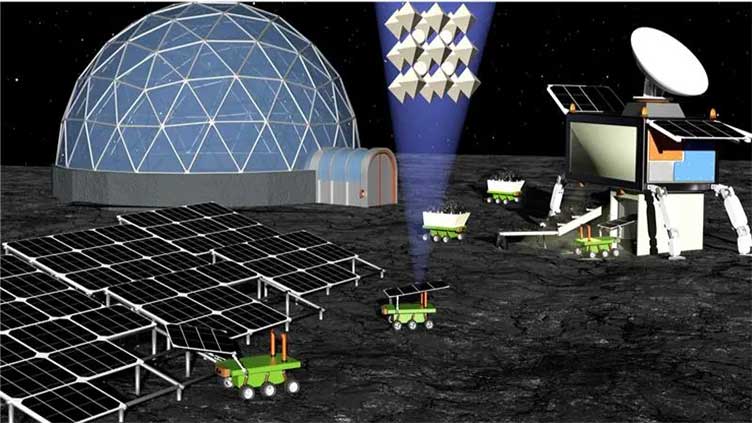Future moon base could be powered by lunar dirt

Technology
Nasa plans to send astronauts to moon in 2026
(Web Desk) - Imagine your home was powered by the dirt in your back garden.
Well, that could be a reality for future lunar astronauts.
Scientists have discovered a way to use Moon dust to build solar power cells that can withstand powerful cosmic radiation better than cells built on Earth.
Using simulated lunar dirt - known as regolith - scientists have been able to create a new Moon glass.
“The solar cells used in space now are amazing, reaching efficiencies of 30% to even 40%, but that efficiency comes with a price,” explained lead researcher Felix Lang of the University of Potsdam, Germany.
“They are very expensive and are relatively heavy because they use glass or a thick foil as cover.
"It’s hard to justify lifting all these cells into space.”
Using this new technique, astronauts could build their own solar cells in space.
Doing so would remove the need to haul heavy materials from Earth to the Moon - which would greatly reduce launch costs.
It also means there will be greater capacity for materials that can't be replicated on the Moon.
Scientists say the process of making moonglass solar cells is surprisingly easy.
So, future lunar astronauts will likely have to do it themselves.
Making solar cells on the Moon instead of Earth could cut transport costs by as much as 99%, according to the team behind the research.
It should also reduce a spacecraft’s launch mass by roughly the same amount.
And containing costs will make long-term lunar settlements - and even Mars colonies - more feasible.
“If you cut the weight by 99%, you don’t need ultra-efficient 30% solar cells, you just make more of them on the Moon," added Lang.
"Plus, our cells are more stable against radiation, while the others would degrade over time.”
When zapped with space-grade radiation, the moonglass solar cells outperformed Earth-made ones, scientists wrote in science journal Device.
Standard Earth-made glass slowly browns in space, which can block sunlight and make them less efficient.
But moonglass apparently has a natural brown tint from impurities in the Moon dust.
These impurities prevent the moonglass from further darkening, and make the solar cells more resistant to radiation.
Nasa has plans to send humans to the Moon in September 2026 in its Artemis III mission.
They are targeting a landing near the lunar South Pole, which scientists believe hosts water and is therefore a good spot for a lunar base.
Both Nasa and the European Space Agency are looking into using lunar regolith to make 3D-printed "space bricks" for building habitation domes.



